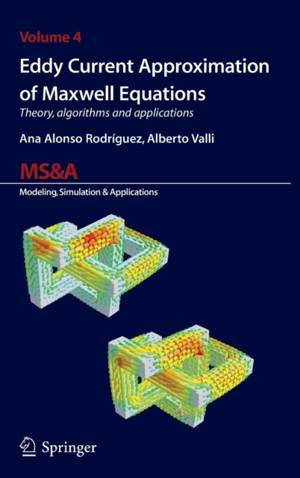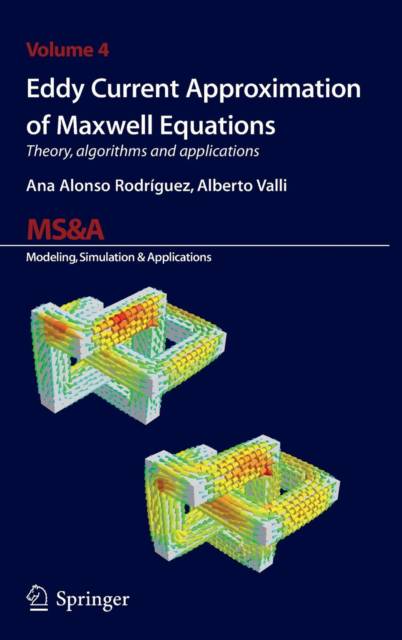
- Retrait gratuit dans votre magasin Club
- 7.000.000 titres dans notre catalogue
- Payer en toute sécurité
- Toujours un magasin près de chez vous
- Retrait gratuit dans votre magasin Club
- 7.000.0000 titres dans notre catalogue
- Payer en toute sécurité
- Toujours un magasin près de chez vous
Eddy Current Approximation of Maxwell Equations
Theory, Algorithms and Applications
Ana Alonso Rodriguez, Alberto Valli
153,95 €
+ 307 points
Format
Description
Continuamentenasconoifatti 1 aconfusionedelleteorie 2 Carlo Dossi Electromagnetism is withoutany doubt a fascinating area of physics, engineering and mathematics. Since the early pioneeringworks ofAmpere, Faraday, and Maxwell, the scienti?cliteratureon this subject has become immense, and books devoted to almost all of its aspects have been published in the meantime. However, webelievethatthereisstillsomeplacefornew booksdealingwithel- tromagnetism, particularly if they are focused on more speci?c models, or try to mix different levels of analysis: rigorous mathematical results, sound numerical appro- mation schemes, real-life examples from physics and engineering. The complete mathematical description of electromagnetic problems is provided by the celebrated Maxwell equations, a system of partial differential equations - pressed interms ofphysical quantitiesliketheelectric?eld, themagnetic?eld and the currentdensity.Maxwell scontributiontotheformulationofthese equationsisrelated to the introductionof a speci?c term, called displacement current, that he proposed to add to the set of equations generally assumed to hold at that time, in order to ensure the conservation of the electric charge. The presence of the displacement current permits to describe one of the most - portant phenomenon in electromagnetism, namely, wave propagation; however, in many interesting applications the propagation speed of the wave is very high with respect to the ratio of some typical length and time scale of the considered device, and therefore the dominant aspect becomes the diffusionof the electromagnetic ?elds. When the focus is on diffusioninstead of propagation, from the modelingpointof view this corresponds to neglecting the time derivative of the electric induction (i.e., thedisplacement current introducedby Maxwell)or, alternatively, neglectingthe time derivative of the magnetic induction."
Spécifications
Parties prenantes
- Auteur(s) :
- Editeur:
Contenu
- Nombre de pages :
- 347
- Langue:
- Anglais
- Collection :
- Tome:
- n° 4
Caractéristiques
- EAN:
- 9788847015050
- Date de parution :
- 19-07-10
- Format:
- Livre relié
- Format numérique:
- Genaaid
- Dimensions :
- 157 mm x 236 mm
- Poids :
- 793 g

Les avis
Nous publions uniquement les avis qui respectent les conditions requises. Consultez nos conditions pour les avis.






